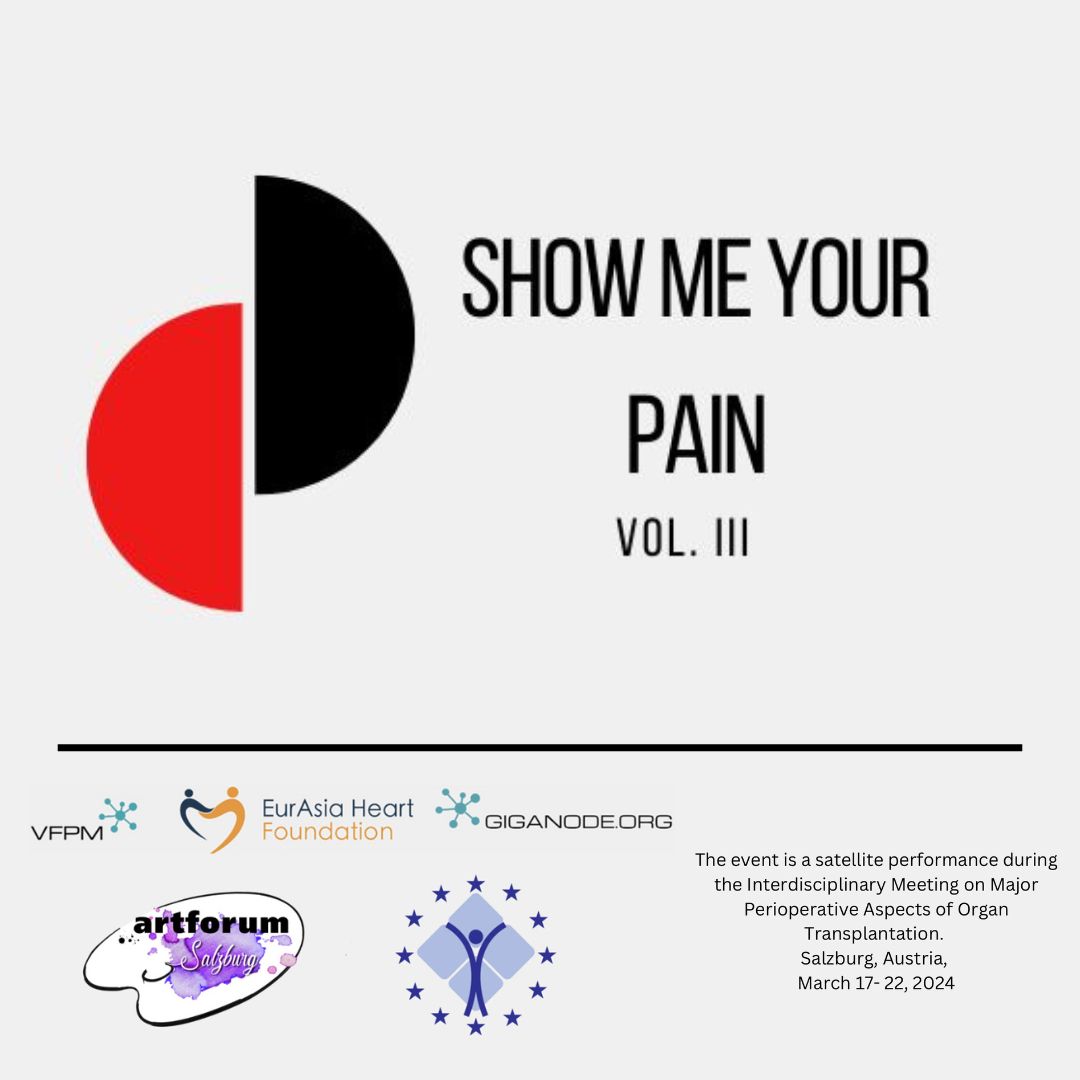Show me your pain vol. III, Salzburg 2024
Pain management is a multifaceted approach aimed at alleviating or reducing the impact of pain on an individual’s life, restoring functionality, and enhancing overall well-being. It encompasses a diverse range of strategies, from pharmacological interventions to complementary therapies, all tailored to address the unique needs of each patient.
Ultimately, effective pain management is a collaborative effort between healthcare providers and patients, working together to develop a personalized treatment plan that addresses the underlying causes of pain while maximizing function and quality of life. By combining pharmacological interventions with physical, psychological, and lifestyle-based approaches, individuals can regain control over their pain and rediscover a sense of vitality and resilience.
Pain and color perception share an intricate relationship, woven within the fabric of human experience. While seemingly disparate, they intersect in profound ways, shaping our understanding of sensation and emotion.
Color, with its spectrum of hues, evokes a myriad of emotions and associations. From the calming embrace of blue to the fiery intensity of red, each shade resonates differently within us. Similarly, pain paints its own canvas of sensation, ranging from dull ache to sharp agony, each imbued with its own unique quality.
Yet, the intertwining of pain and color perception goes deeper than mere metaphorical parallels. Studies suggest that individuals experiencing chronic pain may perceive colors differently, with alterations in the brain’s processing of sensory information leading to shifts in color perception. This phenomenon underscores the intricate interplay between the physical and the perceptual realms, highlighting how our sensory experiences are intertwined and influenced by one another.
Moreover, the psychological impact of color cannot be understated in the realm of pain management. Environmental factors, including the colors of our surroundings, can influence our perception of pain. Warm, soothing colors may promote relaxation and alleviate discomfort, while harsh, contrasting colors might exacerbate feelings of distress.
In art therapy, the fusion of pain and color perception takes on a therapeutic dimension, offering individuals a means of expressing and processing their experiences. Through the act of creation, emotions are externalized and transformed, providing a pathway towards healing and understanding.
Ultimately, the relationship between pain and color perception serves as a poignant reminder of the complexity of human sensation and emotion. It underscores the interconnectedness of our experiences, inviting us to explore the rich tapestry of sensation that shapes our existence.
Communication plays a pivotal role in pain management, serving as a linchpin in the holistic approach to alleviating suffering and improving quality of life for individuals experiencing pain. Effective communication between healthcare providers and patients is essential at every stage of the pain management process, from assessment and diagnosis to treatment and ongoing care.
At the outset, clear and thorough communication is crucial for accurately assessing and understanding the nature of the pain experienced by the patient. Through attentive listening and open-ended questioning, healthcare providers can gather valuable information about the onset, duration, intensity, and characteristics of the pain, as well as its impact on the patient’s daily functioning and quality of life. This collaborative dialogue forms the foundation for developing a personalized pain management plan tailored to the individual’s unique needs and preferences.
Moreover, effective communication empowers patients to play an active role in their pain management journey, fostering a sense of agency, autonomy, and self-efficacy. By providing patients with clear explanations about their condition, treatment options, and potential side effects, healthcare providers enable them to make informed decisions and actively participate in decisions regarding their care. This collaborative approach not only enhances patient satisfaction but also improves treatment adherence and overall health outcomes.
Furthermore, communication serves as a vital tool for addressing the emotional and psychosocial aspects of pain, which often coexist alongside the physical symptoms. By creating a safe and supportive environment for patients to express their feelings, concerns, and fears, healthcare providers can validate their experiences, alleviate distress, and provide much-needed emotional support. This empathetic connection is essential for building trust and rapport, fostering a therapeutic relationship grounded in mutual respect and understanding.
In addition, effective communication enables healthcare providers to educate patients about self-management strategies, coping techniques, and lifestyle modifications that can complement medical interventions and enhance pain relief. By empowering patients with the knowledge and skills to manage their pain effectively, healthcare providers promote resilience, self-care, and overall well-being.
Lastly, communication extends beyond the patient-provider interaction to encompass interdisciplinary collaboration and coordination of care. By sharing information and insights with other members of the healthcare team, including specialists, therapists, and support services, healthcare providers ensure a comprehensive and integrated approach to pain management that addresses the multidimensional nature of pain.


Leave a Reply